
A Cuban crocodile (Crocodylus rhombifer) swims during its release into nature at Zapata Swamp, Cienaga de Zapata, Cuba, August 24, 2022. Cuban crocodiles, an endemic species found only here and in a swamp on Cuba's Isle of Youth, are critically endangered and have the smallest natural habitat left of any living crocodile species, scientists say. (Photo by Alexandre Meneghini/Reuters)
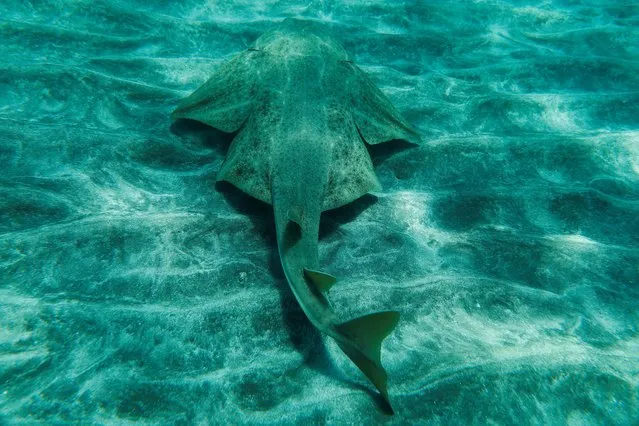
A specimen of an endangered species Angel Shark (Squatina Squatina) is pictured on the Arinaga beach, in the island of Gran Canaria, Spain on April 29, 2023. (Photo by Borja Suarez/Reuters)
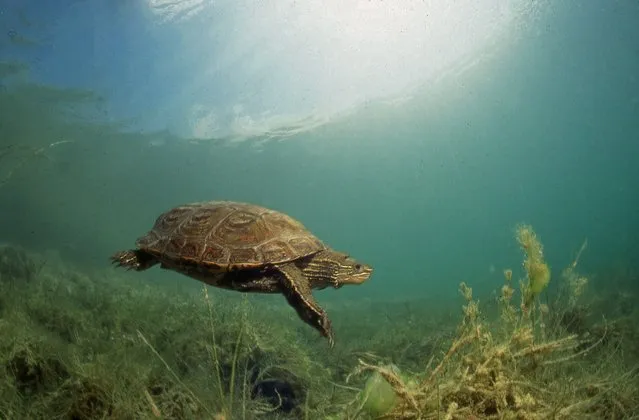
A turtle is seen underwater at the Kapulukaya Dam lake in the historical Cesnigir Bridge corridors in Karakecili district of Kirikkale, Turkiye on November 18, 2022. (Photo by Tahsin Ceylan/Anadolu Agency via Getty Images)
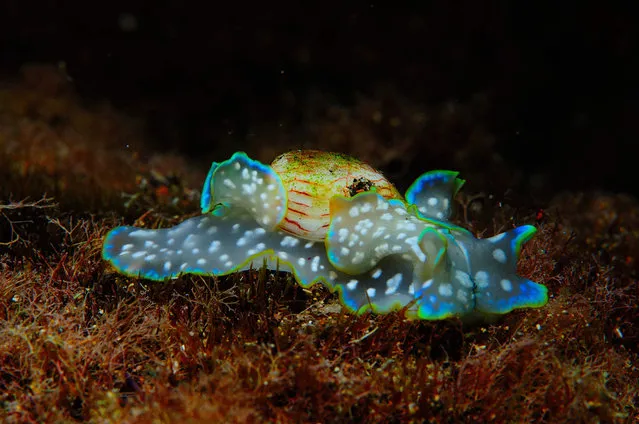
This handout image released by Senckenberg Society for Nature Research on March 16, 2023, shows a Micromelo undatus on October 22, 2014. The Micromelo undatus was among the finalists for the mollusc of the year competition. (Photo by Aketa Herrero Barrencua/Senckenberg Research Institute/AFP Photo)
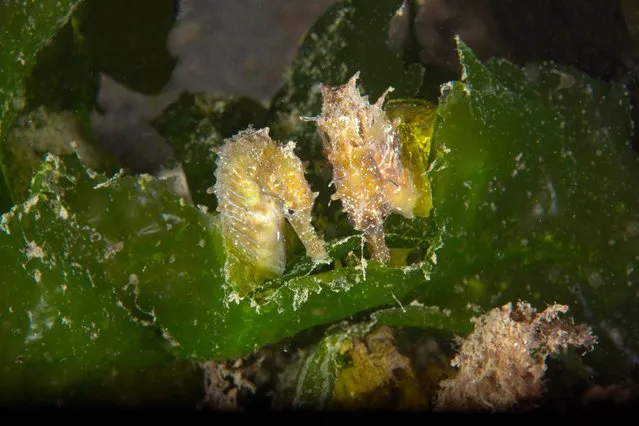
Seahorses are seen in the depths of Sea of Marmara at Izmit Bay, easternmost edge of the Sea of Marmara, in Kocaeli Province, Turkiye on November 29, 2022. Underwater Director of Photography Tahsin Ceylan and his crew dived in Degirmendere region of Golcuk district. (Photo by Tahsin Ceylan/Anadolu Agency via Getty Images)
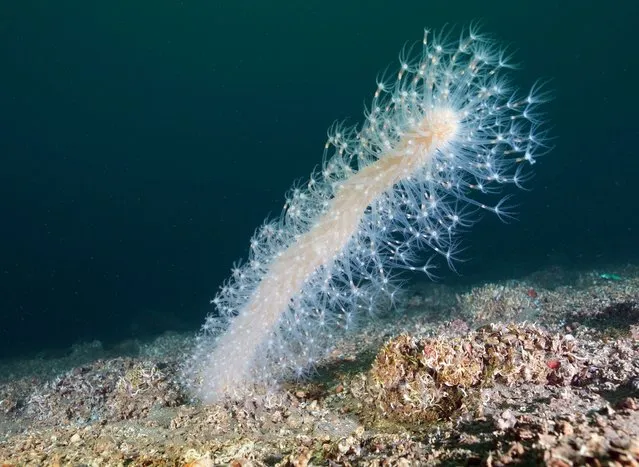
A sea pen (Veretillum cynomorium) is seen in the depths of Sea of Marmara at Izmit Bay, easternmost edge of the Sea of Marmara, in Kocaeli Province, Turkiye on January 08, 2023. Underwater Director of Photography Tahsin Ceylan and his crew dived in Ulasli region of Golcuk district. (Photo by Tahsin Ceylan/Anadolu Agency via Getty Images)
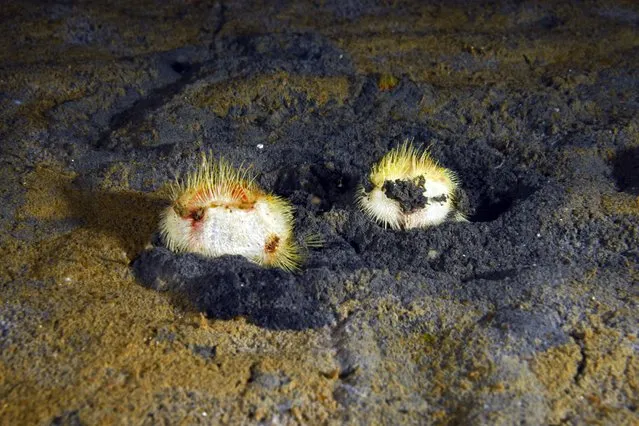
A view of Brissopsis lyrifera, species of sea urchins of the Family Brissidae, are seen above the seabed in Gulf of Izmit in Kocaeli, Turkiye on September 5, 2022. They are fighting for survival as they leave their natural habitat and rise above the seafloor. (Photo by Tahsin Ceylan/Anadolu Agency via Getty Images)
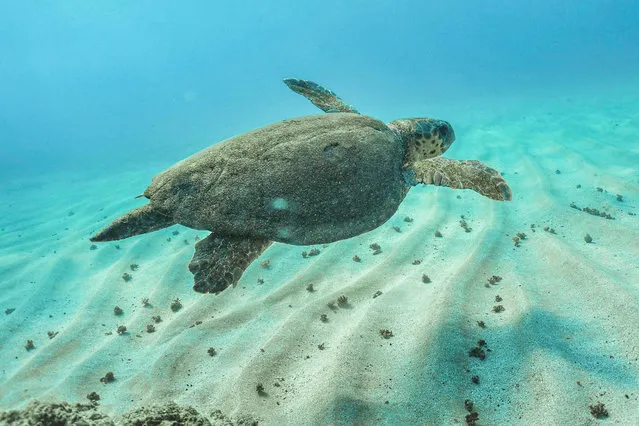
A sea turtle swims some 4 meters underwater off the shore of Lebanon's northern coastal city of Batroun on September 2, 2022. (Photo by Ibrahim Chalhoub/AFP Photo)
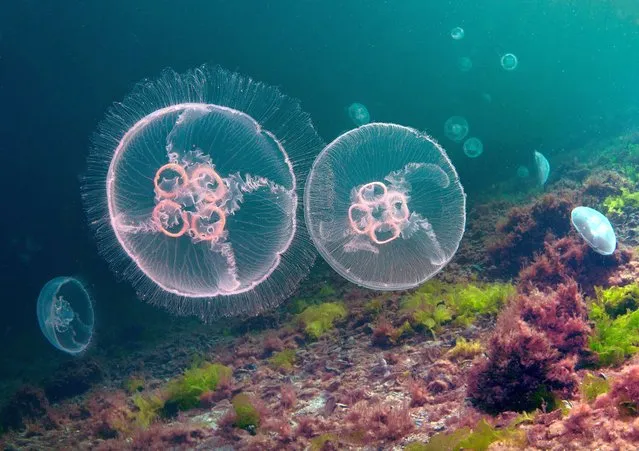
Jellyfish are seen at the Marmara sea in Gulf of Izmir, Turkiye on August 24, 2022. (Photo by Tahsin Ceylan/Anadolu Agency via Getty Images)
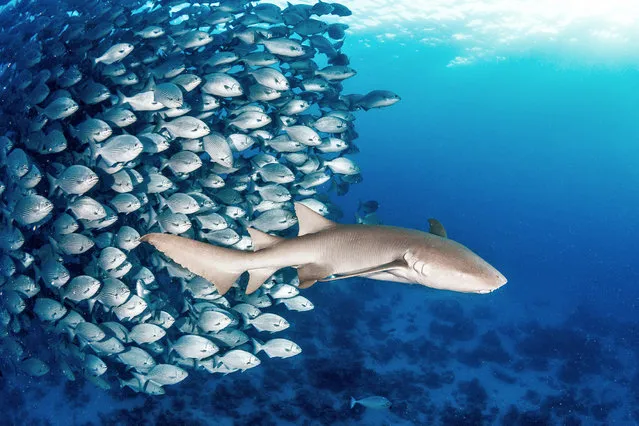
A tawny nurse shark is followed by a “wall” of brassy chub fish at Vaavu Atoll, Maldives, Indian Ocean in November 2022. (Photo by Henley Spiers/NaturePL/Solent News & Photo Agency)
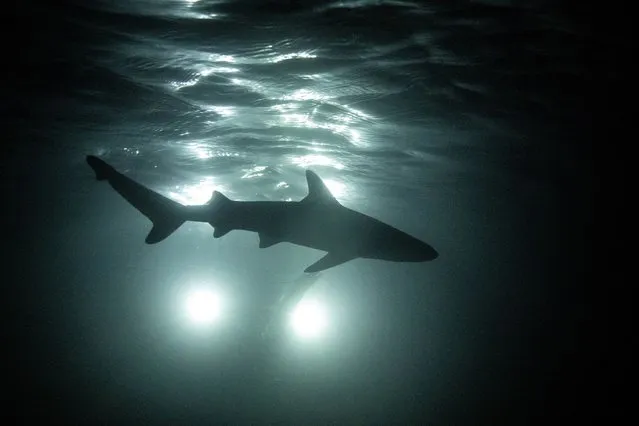
A newborn blacktip reef shark is silhouetted as it swims at night past the Maya Shark Watch Project's baited remote underwater video station, in Maya Bay at the Phi Phi Island National Park, on Phi Phi Leh Island, Krabi province, Thailand, February 27, 2023. Blacktips, named after the distinctive black colouring on their dorsal fins and tails, roam the Andaman Sea and other tropical regions in decreasing numbers due to overfishing, according to the International Union for Conservation of Nature. (Photo by Jorge Silva/Reuters)
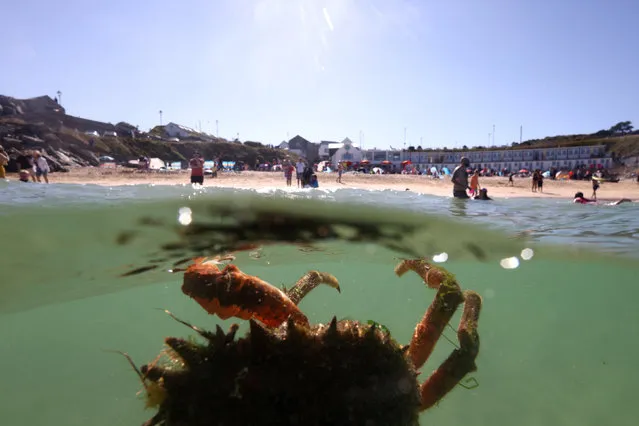
A spider crab is seen near Porthgwidden beach in St Ives, Cornwall, Britain on August 7, 2022. (Photo by Tom Nicholson/Reuters)
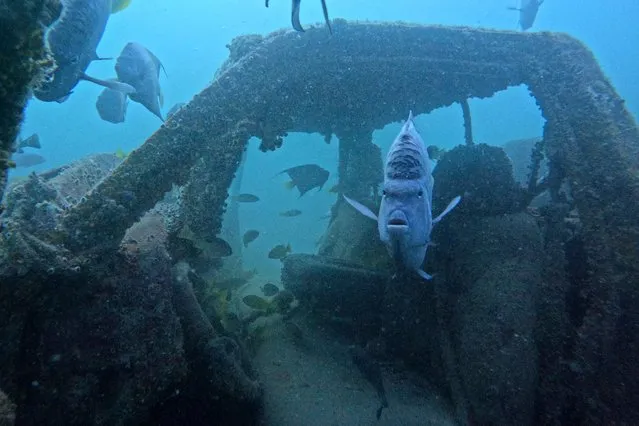
A blue angel fish swims around a sunken vehicle in the Mesaieed sea-line at the GMC dive site in Mesaieed, Qatar Wednesday, November 30, 2022. World Cup fans in Qatar hoping to see some of the Gulf‚ marine life are visiting the artificial reefs just off the coast of the small, peninsular Arab nation. The underwater installations of stripped-out vehicles, bicycles, concrete blocks and toilets attract divers across the Gulf Arab world and elsewhere. (Photo by Abbie Parr/AP Photo)
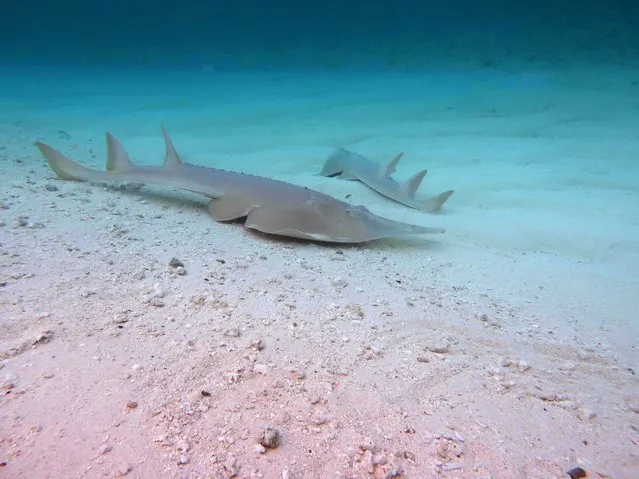
This handout image released by Simon Fraser University/James Cook University on January 16, 2023, shows a pair of shovelnose rays off the coast of Australia. Nearly two thirds of the sharks and rays that live among the world's corals are threatened with extinction, according to new research published on January 16, 2023, in the journal Nature Communications. Coral reefs, which harbour at least a quarter of all marine animals and plants, are gravely menaced by an array of human threats, including overfishing, pollution and climate change. Shark and ray species – from apex predators to filter feeders – play an important role in these delicate ecosystems that “cannot be filled by other species”, said Samantha Sherman, of Simon Fraser University in Canada and the wildlife group TRAFFIC International. (Photo by Colin Simpendorfer/Simon Fraser University/James Cook University/AFP Photo)
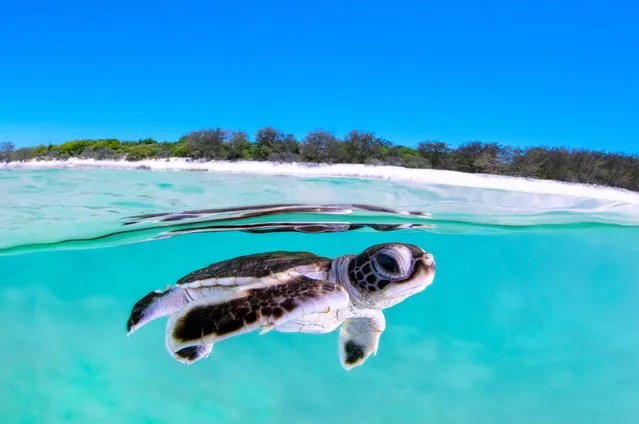
A baby turtle's perilous first moments are captured as it takes to the sea for the first time on Heron Island in Queensland, Australia in July 2022. Predators such as sharks, birds, and pollution mean that approximately only one out of every 1000 turtles that hatch make it to adulthood, with some not even reaching open ocean. Amateur photographer (Photo by Hannah Mitchell/Solent News & Photo Agency)
06 Oct 2023 04:29:00,
post received
0 comments
